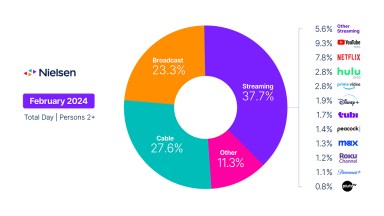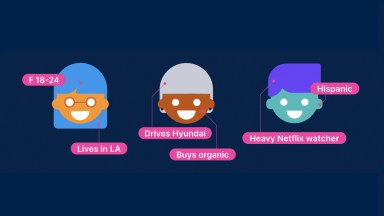In modern media, personalization will become increasingly critical in connecting audiences with content and advertising that best align with their interests and preferences. For brands seeking 1:1 relationships with new consumers, quality audience data has become critical as the digital landscape expands and channel engagement fragments. This is particularly relevant across two fronts: traditional digital media across computer and mobile and connected TV (CTV1).
While the lines between these two environments are blurring, they currently exist independent from one another, which means that marketers need to understand how each is structured and evolving so they can best navigate the intricacies to best capitalize on the promise of personalization.
The digital advertising ecosystem is fundamentally different for CTV than it is for other platforms.
- In browser-based digital media, marketers have used third-party cookies for audience-specific digital engagement for more than 20 years. Now, as the industry moves away from cookies, Nielsen is prepared to use other identifiers such as hashed emails (HEMs) or any other ubiquitous identifiers that the industry uses, as there is no single universal identifier that the ecosystem has adopted that is a true replacement for cookies. Nielsen is recommending the use of HEMs for digital measurement as it is a non-proprietary identifier that can be generated without integrating with other third-party systems.
- In video-based CTV, marketers use a combination of first-party identifiers, unique device IDs and/or household IP addresses for audience-specific advertising.
While complex and evolving, these environments become significantly more navigable for marketers when they have person-based measurement data to tap into for their campaign efforts.
Foundational differences aside, traditional digital media and CTV are similar in that they offer the same value proposition to marketers: a direct means of communicating with specific audiences. While many throughout the industry expected media spending across traditional digital channels to decline as cookies become obsolete and access to mobile identifiers becomes more difficult, a custom survey2 fielded by Nielsen ahead of the 2024 Upfronts/NewFronts season found that advertisers and agencies expect their digital allocations to outpace those across CTV and streaming.
Given the recessionary environment, total ad spending in the U.S. was down in 2023 on a year-over-year basis, but marketers did increase their allocations in select channels to navigate the unsettled environment, including business-to-business, local magazines, local radio, regional cinema, network radio and streaming3. And generally speaking, marketers pulled back less (on a percentage basis) across digital channels than they did across traditional mass reach channels like network and cable TV.
Media allocations are following audience engagement
The increased shift to digital channels highlights marketers’ desire to follow media consumption trends, while simultaneously leveraging technology to bridge more meaningful relationships with audiences. From a digital engagement perspective, CTV now reaches 74% of U.S. TV homes4, 84.1% of TV homes have access to a subscription video on-demand (SVOD) service5 and U.S. audiences spend nearly four hours each day with their digital devices5.
Despite understanding how audiences are spending their time with traditional digital media and CTV, we know that the emergence of new media channels adds to the measurement needs of marketers. Nielsen’s 2023 Annual Marketing Report found that 62% of global marketers rely on multiple tools for their cross-measurement, and 14% use four or five.
Findings from our 2024 Upfront/NewFront survey support these findings, as 26% of advertiser/agency respondents say that relying on multiple solutions to measure across channels is their top challenge. Additionally, 41% say that a lack of transparency into audience data is among their top two biggest cross-media measurement challenges.
With a lack of clear insight into their audiences, it’s not surprising that 51% of respondents say they’re concerned that their cross-media campaigns are being delivered to their intended audiences, which has a ripple effect with respect to evaluating cross-channel campaign effectiveness.
Advertisers remain largely dependent on third-party cookies
In web-based environments, Google has stated it plans to deprecate third-party cookies by the end of 2024. While companies like Nielsen have developed technology to match data with HEMs and other identifiers, the digital ecosystem needs to evolve to a point where HEMs and/or alternate identifiers become ubiquitous.
To date, despite the imminent demise of third-party cookies, advertisers remain dependent on them. A recent report from supply chain platform 33Across, for example, found that advertisers throughout the second half of 2023 invested the vast majority of their programmatic spending with the aid of cookies. Retail and insurance brands have made the most progress in moving away from cookies, but still used cookies for 74% and 76% of their programmatic spending, respectively. Food and drink brands are at the other end of the spectrum, with 87% of their programmatic spending dependent on cookies.
With the clock ticking for the ultimate demise of the third-party cookie, it’s critical that brands begin capturing email addresses for use in HEMs and/or alternate identifiers. It’s also important for identity providers to begin passing email addresses in addition to device identifiers. With this information, providers like Nielsen can ingest the necessary data to measure the impact of targeted marketing campaigns in the absence of third-party cookies.
Staying personal amid the rise of CTV
Unlike in web-based environments, programmatic ad delivery in CTV has never been dependent on third-party cookies. The scaled and addressable advertising ecosystem developing in CTV is based on connections between first-party IDs and IP addresses. Here, the first-party IDs replace cookies.
In terms of ad spend, GroupM notes that CTV is where all the upside in TV resides, forecasting compound annual growth of 9.5% to $45.8 billion in 2028. From an advertiser and agency perspective, CTV is not as well positioned to deliver on their primary KPIs as online video and online display advertising.
Clarity into the audiences engaging the CTV content is paramount in helping brands best understand how to engage with relevant viewers. And just as in traditional web-based environments, data within CTV is growing increasingly privacy-focused.
That’s where having person-based panel data as a truth set amid growing big data sources is critical. Nielsen’s big data set, for example, includes 45 million households and covers 75 million devices. When backstopped by a gold-standard panel composed of more than 101,000 individual people, measurement offers the combination of scale, coverage and granularity, all of which are critical for advertisers and agencies seeking to stay connected with specific audiences as the media landscape evolves.
Sources
1CTV refers to any television that is connected to the internet. The most common use case is to stream video content.
2Custom survey conducted online between Oct. 9 and Oct. 23, 2023. Survey respondents included 250 marketing professionals with responsibility for media planning, media strategy and media buying.
3Nielsen Ad Intel; January-September 2022-2023 YOY comparison.
4Nielsen National TV Panel; Q3 2023
5Nielsen National TV Panel; February 2024



